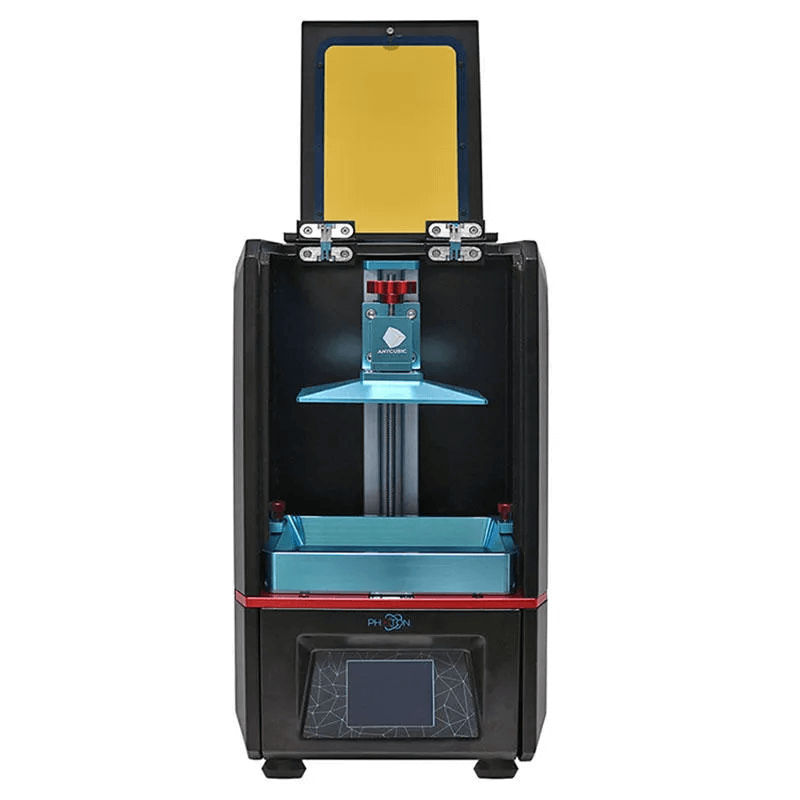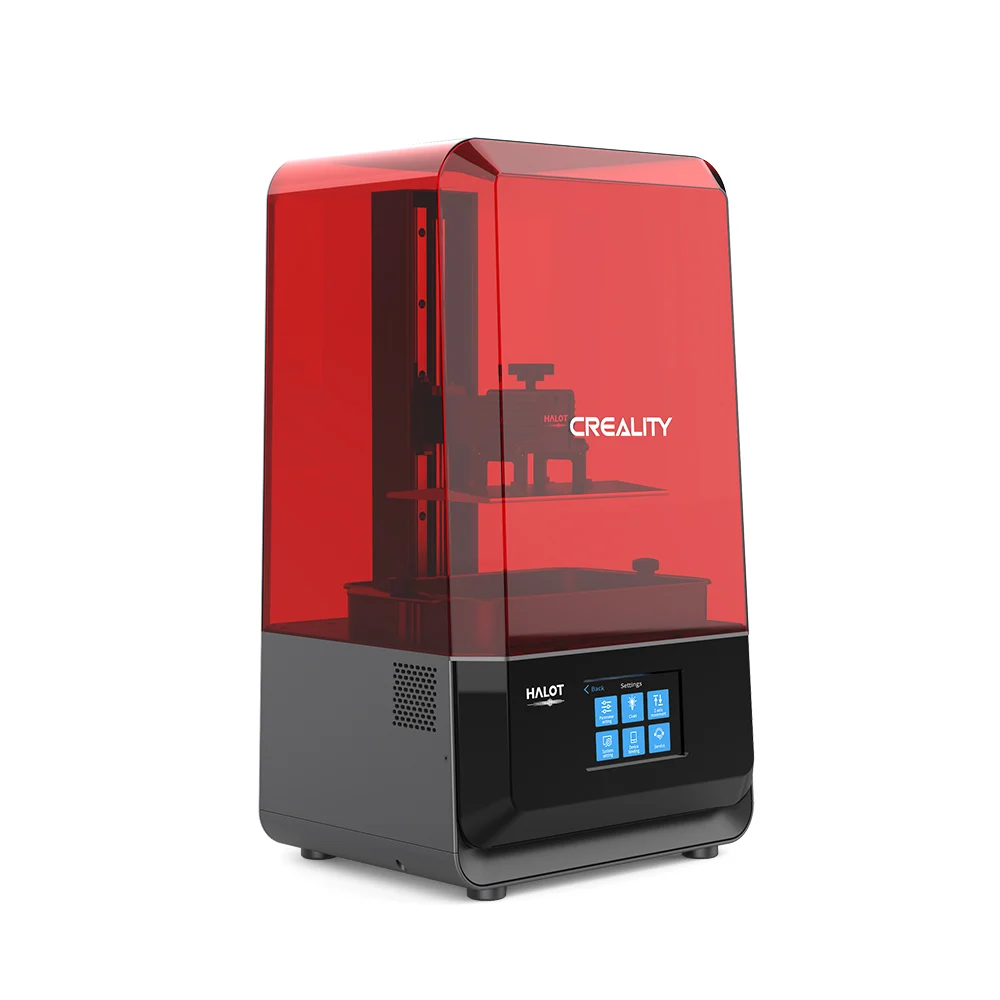Compare Photon vs Halot Lite
Comparison between the best 3D printers
Choose the best 3D printer at the best price. The cheapest 3D printers are here.
Buy a 3D printer here with 3D Fila.
 |
 |
|
| Model | Photon |
Halot Lite |
| Printing Material | Resin | Resin |
| Buy Resin for Anycubic Photon | Buy Resin forCreality 3D Halot Lite | |
| Estimated price | $100,00 | $400,00 |
| Manufacturer | Anycubic | Creality 3D |
| Release Year | 2019 | 2021 |
| Print Volume [mm] | 65x115x155 | 192x120x200 |
| Printer Size [mm] | 220x200x400 | 330x301x572 |
| Weight [kg] | 7,2 | 10,6 |
| Power Loss Recovery | NO | NO |
| Technology | LCD | LCD Mono |
| Screen Resolution | 4k | |
| Max Print Speed [s/layer] | 10 | 1 |
| Maximum Resolution [mm] | 0,01 | |
| Processor | ||
| Display | Touchscreen TFT 3,5'' | Display touchscreen 5'' |
| Power Supply | 40W | |
| Connectivity | USB | SD / USB |
| Operating systems | Windows, Mac, Linux | Windows, Mac, Linux |
| Date of registration in the system | 2021-04-15 | 2022-11-04 |
| Release date | 2019 | 2021 |
| Extra features | The Anycubic Photon DLP is a resin 3D printer that stands out for its affordability and quality. It uses DLP (Digital Light Processing) technology to cure resin layers with precision, offering resolution of 25-100 microns. Its build volume is 115 x 65 x 155 mm, suitable for modest-sized projects. It includes a 2.8-inch touchscreen, USB and SD card connectivity, and a carbon filter to mitigate odors. It is notable for generating efficient support structures through its custom slicing software. Although it requires care in resin handling and post-processing, it is an excellent option for beginners and professionals who want to explore resin 3D printing with high resolution and ease of use. | Crealitys Halot Lite printer stands out in the mid-size resin 3D printing segment, with a build volume of 192 x 120 x 200 mm and 50 micron resolution. It offers a monochrome LCD for fast and durable printing, and an upgraded light source that ensures over 80% uniformity across the print bed. It includes Wi-Fi connectivity for remote control and updates, an ARM Cortex CPU for efficient performance, and is compatible with Halot Box and Lychee slicing software. It also has an activated carbon filter to reduce odors. |
| Support for multiple colors and materials (AMS and CFS) | NO | NO |
Notes * |
||
| Cost-benefit | 6 / 10 | 8 / 10 |
| Hardware | 0 / 10 | 1.2 / 10 |
| Tela | . | . |
| Print volume | 3 / 10 | 3 / 10 |
| Performance | 0 / 10 | 9 / 10 |
Conclusion |
| In comparing the Anycubic Photon and the Creality 3D Halot Lite, several factors emerge that highlight their distinct advantages and target audiences. The Anycubic Photon, while being the more budget-friendly option, offers exceptional value for entry-level users or hobbyists. With its compact build volume and high resolution capabilities, it is well-suited for smaller projects requiring precision. However, its limitations in terms of print speed and absence of extensive features may deter users who need larger prints or advanced functionalities. The Photon’s affordability makes it an attractive choice for those new to resin printing but who may not need robust performance or large print volumes. Its rating in terms of cost-benefit reflects this balance. Conversely, the Creality 3D Halot Lite caters to a more demanding audience with its larger print volume and enhanced performance capabilities. The upgraded monochrome LCD and advanced light source contribute to faster print times and improved durability. Additionally, features like Wi-Fi connectivity and compatibility with various slicing software enhance user convenience and versatility. Although higher in price, its performance rating indicates that it is geared toward users who require efficiency and quality for mid-sized projects. In conclusion, the choice between the Anycubic Photon and the Creality 3D Halot Lite boils down to the specific needs of the user. For those just starting out in 3D printing or who prioritize affordability, the Photon remains a reliable choice. On the other hand, for users seeking better performance and larger capabilities, the Halot Lite offers a superior solution that justifies its higher price point. Therefore, both printers have their merits, and the best option will depend on the user's objectives and budget constraints. |

